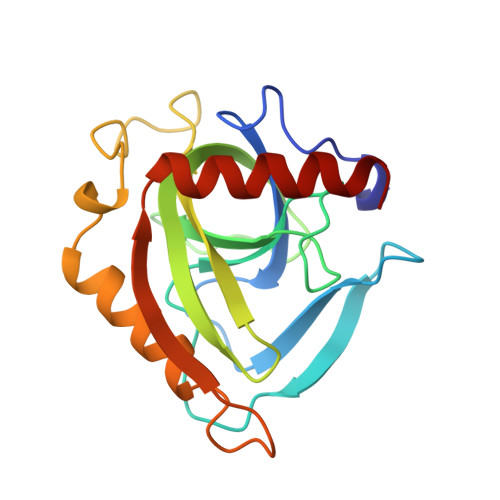Crystal structure of Escherichia coli inorganic pyrophosphatase complexed with SO4(2-). Ligand-induced molecular asymmetry.
Avaeva, S., Kurilova, S., Nazarova, T., Rodina, E., Vorobyeva, N., Sklyankina, V., Grigorjeva, O., Harutyunyan, E., Oganessyan, V., Wilson, K., Dauter, Z., Huber, R., Mather, T.(1997) FEBS Lett 410: 502-508
- PubMed: 9237692
- DOI: https://doi.org/10.1016/s0014-5793(97)00650-9
- Primary Citation of Related Structures:
1JFD - PubMed Abstract:
The three-dimensional structure of inorganic pyrophosphatase from Escherichia coli complexed with sulfate was determined at 2.2 A resolution using Patterson's search technique and refmed to an R-factor of 19.2%. Sulfate may be regarded as a structural analog of phosphate, the product of the enzyme reaction, and as a structural analog of methyl phosphate, the irreversible inhibitor. Sulfate binds to the pyrophosphatase active site cavity as does phosphate and this diminishes molecular symmetry, converting the homohexamer structure form (alpha3)2 into alpha3'alpha3". The asymmetry of the molecule is manifested in displacements of protein functional groups and some parts of the polypeptide chain and reflects the interaction of subunits and their cooperation. The significance of re-arrangements for pyrophosphatase function is discussed.
- A.N. Belozersky Institute of Physico-Chemical Biology, Moscow State University, Vorobyevy Gory, Russia.
Organizational Affiliation:

















